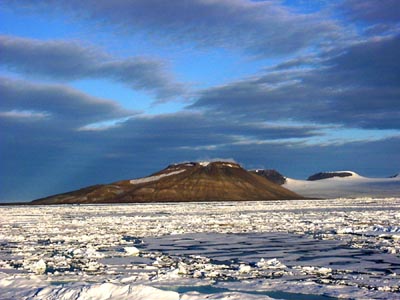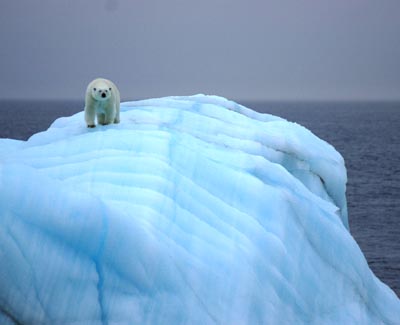Conception of the joint AARI/NPI Laboratory
Summary
The overall direction of the Fram Arctic Laboratory (FAL) is to carry out joint
Norwegian-Russian research on Arctic climate change. Thematically the
focus is on studies of long-term changes in the physical system
including the marine system (ocean and sea ice), the atmosphere and
the terrestrial system (glaciers and fresh water). Geographically the focus is
on the Euro-Arctic region, with special emphasis on Svalbard and the
Greenland- and Barents Seas. The collaboration will include joint research
programmes implemented in Barentsburg, Ny-Alesund and Longyearbyen.
Introduction
The Arctic environment has undergone significant temperature swings over
the last 100 years. Over the last 30 years trends show surface temperature
warming, melting permafrost, reduced sea-ice, longer growing seasons and
changes in the character of ocean fluxes. It is important to recognize that
these events have already occurred or are under way, and that it is
desirable to anticipate their future course or at least assess their potential
range. Largely because global warming simulations suggest an amplified
climate response in the Arctic, it has been argued that Arctic climate provides
an early warming of global change. It has also been pointed out, however,
that climate variability in the Arctic is large, so that a weak ignal-to-noise ratio
may
initially mask climate trends. It seems likely that both the amplified climate
response and the large natural variability are connected with the strong
feedbacks that characterize the Arctic climate system. The long-term climate
data series and Arctic expertise available in Norway and Russia represent
a unique platform for obtaining scientific achievements in Arctic climate
change research. The FAL is an appropriate instrument for reaching such
goals. In the following, scientific directions of the FAL are shortly presented.
In the appendices, specific project ideas that have been identified jointly
Polar Institute (NPI) are described.
Sea ice
Sea ice has a dramatic effect on the physical characteristics of the ocean surface.
It modifies the surface radiation balance due to its high albedo, and it influences
the exchange of momentum, heat, and matter between atmosphere and ocean.
It also results in much lower surface air temperatures over the ice-covered areas
in winter than are maintained by the ocean immediately underneath. Freezing of
sea ice expels brine which deepens the surface mixed layer and can, through
convection, influence the formation of deep and bottom water. Melting, in
contrast, produces relatively fresh water that stratifies the oceanic surface
layers (i.e. the mixed layer retreats to shallower depths). In contrast to low
latitudes, the mixed layer evolution in Polar Regions is dominated by surface
fluxes of salt or fresh water (positive or negative freezing rates). Through these
effects, sea ice plays a key role in the global heat balance and the global
thermohaline circulation.
A retreat of sea ice associated with climate warming can therefore have global
consequences and contributes, through various feedback processes, to
enhanced climate change, particularly at high latitudes. In the FAL collaboration
we wish to focus on a wide variety of studies connected to sea ice and climate,
in particular variability and trends of sea ice concentration, sea ice thickness, and
sea ice fluxes (in the Fram Strait) as well as physical and optical properties of sea
ice. Special emphasis on sea ice-albedo feedback mechanisms will be given.









